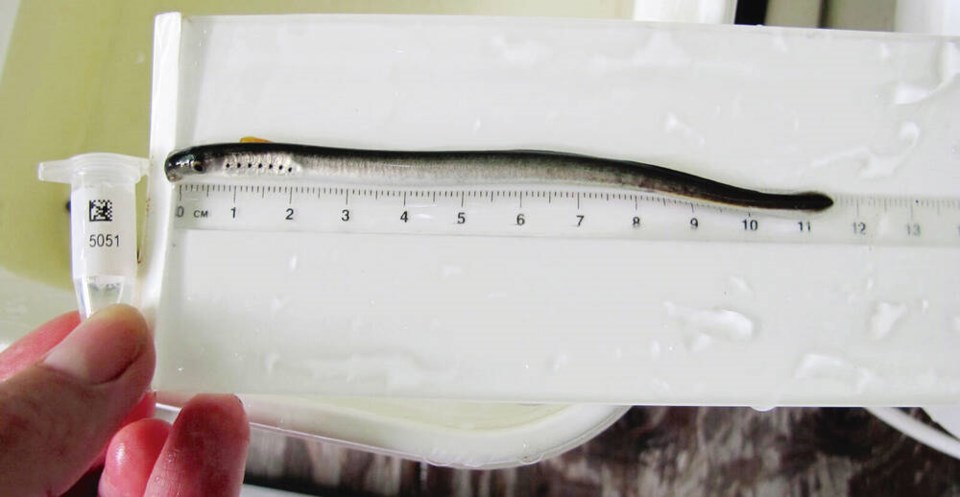An ancient and unusual fish, first identified by a Nanaimo scientist, has a secure home now that the Morrison Creek headwaters, near Cumberland, have become a nature sanctuary.
Commonly called the Morrison Creek lamprey, Lampetra ricardsoni variety marifuga (meaning it avoids marine waters) was discovered in the late 1970s by Richard Beamish, emeritus scientist at the Pacific Biological Station.
“The reason that lamprey have survived for 360 million years is that they have within their genetic ability to change their life-history type when the environment becomes stressful,” Beamish said Friday.
“It’s the only reported example of a non-parasitic lamprey that can become parasitic. The same animal can become both.”
Scientifically, “this is absolutely remarkable,” said Beamish, who has published about a dozen papers on the fish.
Lamprey have three life- history types. They start off as an eel, then, after about six years, change into the adult form with digestive and reproductive systems, eyes and teeth, readying it to spawn the following year, he said.
The second life-history type becomes parasitic and feeds on other fish only in freshwater. The Morrison lamprey falls into this type.
The third type becomes parasitic and migrates to the ocean, feeds there and returns to its home waters.
The Morrison lamprey is key to understanding how all lampreys have survived for so long, making it one of the most successful fish, Beamish said.
The fish, named by Beamish, has caught the attention of others who campaigned to preserve Morrison Creek, where other vulnerable species also live. The Morrison Creek lamprey is classified as endangered by the Committee on the Status of Endangered Wildlife in Canada.
Beamish also described a new species of lamprey from Lake Cowichan in 1982. In all, there are 35 to 40 lamprey species.
>>> To comment on this article, write a letter to the editor: [email protected]



